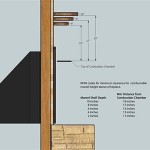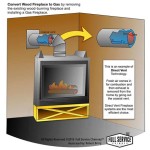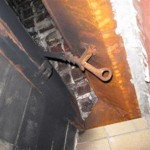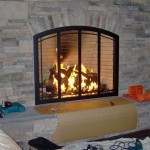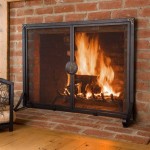Propane Gas Fireplaces and Stoves: A Comprehensive Overview
Propane gas fireplaces and stoves have become increasingly popular as heating and aesthetic options for homes. They offer a convenient, efficient, and clean-burning alternative to traditional wood-burning fireplaces and stoves. Understanding the nuances of propane gas fireplaces and stoves, including their advantages, disadvantages, installation requirements, and maintenance procedures, is essential for homeowners considering this heating solution.
The allure of propane gas fireplaces and stoves lies in their ability to provide instant warmth and ambiance without the mess and labor associated with wood. This efficiency and ease of use have contributed to their widespread adoption in both new construction and renovation projects. Furthermore, technological advancements have expanded the design possibilities, offering a wide range of styles and features to suit diverse architectural preferences and heating needs.
This article provides a comprehensive overview of propane gas fireplaces and stoves, covering key aspects such as their operational principles, different types available, safety considerations, and maintenance requirements. The aim is to equip readers with the knowledge necessary to make informed decisions regarding propane gas fireplaces and stoves for their homes.
Key Advantages of Propane Gas Fireplaces and Stoves
Several compelling advantages contribute to the popularity of propane gas fireplaces and stoves. These advantages often outweigh the initial investment and ongoing fuel costs, making them a viable option for many homeowners.
Convenience and Ease of Use: One of the most significant advantages of propane gas fireplaces and stoves is their convenience. Unlike wood-burning units, they require no wood gathering, stacking, or starting a fire. With a simple switch or remote control, the fireplace or stove ignites and provides immediate warmth. The flame height and heat output can be easily adjusted, offering precise control over the ambiance and temperature. Turning the unit off is equally straightforward, eliminating the need to wait for embers to burn out.
Efficiency and Clean Burning: Propane gas is a relatively clean-burning fuel, producing significantly fewer emissions than wood. This translates to cleaner air both inside and outside the home. Moreover, propane gas fireplaces and stoves are generally more efficient than wood-burning fireplaces, converting a higher percentage of fuel into usable heat. This improved efficiency can lead to lower heating costs, especially when used as a supplementary heat source.
Versatility and Design Options: Propane gas fireplaces and stoves are available in a wide variety of styles, sizes, and designs. From traditional log sets to contemporary glass burners, there is a model to suit virtually any architectural style and aesthetic preference. These units can be installed in existing fireplaces, built into new walls, or used as freestanding stoves, offering flexibility in placement and design integration. The availability of remote controls, programmable thermostats, and other advanced features further enhances their versatility.
Types of Propane Gas Fireplaces and Stoves
The market offers various types of propane gas fireplaces and stoves, each with its own characteristics and suitability for different applications. Understanding these distinctions is crucial for selecting the right unit for specific needs.
Direct Vent Fireplaces and Stoves: Direct vent units are sealed combustion systems that draw air from outside the home and exhaust combustion gases directly outdoors through a dedicated vent pipe. This design eliminates the need for a traditional chimney and ensures that no combustion byproducts enter the living space. Direct vent fireplaces and stoves are highly efficient and safe, making them a popular choice for new construction and renovations. They can be vented horizontally through a wall or vertically through the roof, providing flexibility in installation.
Vent-Free (Ventless) Fireplaces and Stoves: Vent-free fireplaces and stoves do not require a vent or chimney. They burn propane gas so efficiently that they release minimal amounts of combustion byproducts into the room. While they offer convenience and cost savings in terms of installation, vent-free units require careful consideration. They are equipped with oxygen depletion sensors (ODS) that shut off the gas supply if oxygen levels in the room become too low. However, proper ventilation is still crucial to prevent the build-up of carbon monoxide and other pollutants. They should only be used as supplemental heat sources in well-ventilated rooms and are not recommended for bedrooms or tightly sealed homes.
B-Vent Fireplaces and Stoves: B-vent fireplaces and stoves utilize a B-vent chimney to exhaust combustion gases. They draw air from the room for combustion and require a properly functioning chimney to vent the exhaust safely. B-vent units are less efficient than direct vent models because they draw heated air from the room and exhaust it through the chimney. They are typically used in existing fireplaces with existing chimneys, providing a relatively simple conversion from wood-burning to gas.
Propane Inserts: Propane inserts are designed to fit into existing wood-burning fireplaces, converting them into efficient gas-burning units. They offer the convenience and efficiency of a gas fireplace without the need for major construction. Inserts typically feature a sealed combustion chamber and a direct vent system, improving safety and efficiency compared to traditional wood-burning fireplaces. They are a popular choice for homeowners who want to upgrade their existing fireplace without undertaking a complete renovation.
Safety Considerations and Maintenance of Propane Gas Fireplaces and Stoves
The safe operation of propane gas fireplaces and stoves is paramount. Adhering to safety guidelines and performing regular maintenance are essential to prevent accidents and ensure the longevity of the unit.
Professional Installation: Proper installation is crucial for the safe and efficient operation of propane gas fireplaces and stoves. It is highly recommended to hire a qualified and licensed technician to install the unit. The technician will ensure that the gas connections are properly made, the venting system is correctly installed, and the unit is operating within its specifications. Incorrect installation can lead to gas leaks, carbon monoxide poisoning, or fire hazards.
Carbon Monoxide Detectors: Carbon monoxide (CO) is a colorless, odorless, and deadly gas produced by the incomplete combustion of fuels. It is essential to install carbon monoxide detectors in your home, especially near sleeping areas and in the vicinity of the fireplace or stove. Regularly test the detectors to ensure they are functioning properly. If a CO alarm sounds, immediately evacuate the premises and contact emergency services.
Regular Inspections and Maintenance: Propane gas fireplaces and stoves should be inspected and maintained regularly to ensure they are operating safely and efficiently. At least annually, have a qualified technician inspect the unit for any signs of damage, wear, or corrosion. The technician will also clean the burner assembly, check the gas connections for leaks, and inspect the venting system for blockages. Additionally, homeowners should regularly clean the glass front of the fireplace or stove to maintain optimal visibility and prevent the build-up of soot or residue.
Proper Ventilation: Even with direct vent or vent-free units, proper ventilation is crucial. Ensure that the room where the fireplace or stove is located is adequately ventilated to prevent the build-up of carbon monoxide and other pollutants. Vent-free units should only be used in well-ventilated rooms and should never be operated for extended periods without ventilation. If you experience any symptoms of carbon monoxide poisoning, such as headache, dizziness, or nausea, immediately turn off the unit, ventilate the room, and seek medical attention.
Gas Leak Detection: If you suspect a gas leak, immediately turn off the gas supply to the fireplace or stove and open windows and doors to ventilate the area. Do not use any electrical appliances or light a match, as this could ignite the gas. Evacuate the premises and contact your gas company or emergency services from a safe location. Propane gas has a distinctive odor, similar to rotten eggs, which is added to propane to help detect leaks. If you smell this odor, treat it as a gas leak and take immediate action.
Operating Procedures: Always follow the manufacturer's instructions for operating the propane gas fireplace or stove. Never tamper with the unit or attempt to modify it in any way. Keep flammable materials, such as curtains, furniture, and paper, away from the fireplace or stove to prevent fire hazards. Supervise children and pets when the unit is in operation to prevent accidental burns or injuries.
In conclusion, propane gas fireplaces and stoves offer numerous advantages in terms of convenience, efficiency, and design versatility. By understanding the different types of units available, adhering to safety guidelines, and performing regular maintenance, homeowners can enjoy the warmth and ambiance of a propane gas fireplace or stove while ensuring their safety and the longevity of their investment.

Pleasant Hearth 27 500 Btu 42 In Convertible Ventless Propane Gas Fireplace Cherry Vff Ph26lp The Home Depot

Propane Fireplaces Gas Stoves Id Mt Wy Fall River

Duluth Forge 55 In Black Ventless Natural Or Liquid Propane Gas Fireplace The Fireplaces Department At Com

Napoleon Riverside Clean Face 47 Inch Outdoor Built In Propane Gas Fireplace W Millivolt Ignition And Brushed Stainless Steel Gss42cfn

Gas Stoves Freestanding Stove Fireplaces Napoleon

Bluegrass Living 55 In Black Ventless Liquid Propane Gas Fireplace The Fireplaces Department At Com

32 000 Btu Vent Free Cast Iron Liquid Propane Gas Stove Agc500vflp The Home Depot

Thelin Gnome Gas Stove Hearth S Great American Fireplace In Menomonie Wi

Heat N Glo Paloma Direct Vent Gas Stove

Gas Burning Stove Installation Service Provider More In Wi
Related Posts

